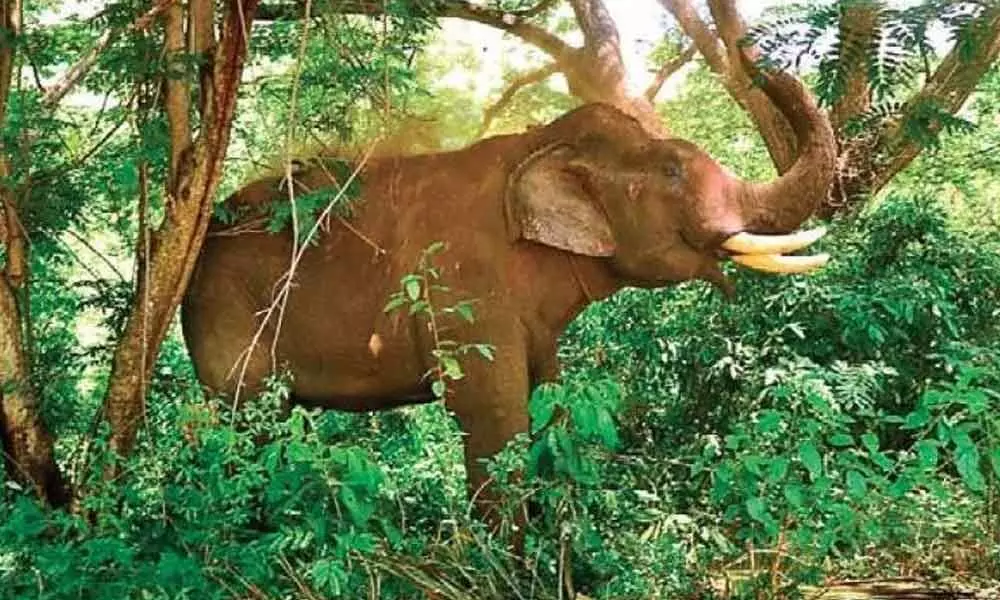Lone Male Elephants Are More Inclined To Approach Human Habituate

(Picture used for representational purpose only)
- Lone male elephants will be entering human habituate in greater numbers as compared to the female elephants or herds.
- The research was conducted as part of a comprehensive elephant conflict monitoring system that aimed to assess, comprehend, design site and season-specific conflict mitigation strategies.
A survey was undertaken by the Coimbatore Forest Division,where it was observed that lone male elephants will be entering human habituate in greater numbers as compared to the female elephants or herds.
As to the Forest Department, from November 2020 to June 2021, a group of watchers known as the Border Night Patrolling Team, which drives back elephants straying from the forest for crop-raiding, collected data on elephants leaving the forest to enter human habitats in the Coimbatore forest area on a daily basis.The research was conducted as part of a comprehensive elephant conflict monitoring system that aimed to assess, comprehend, design siteand season-specific conflict mitigation strategies.The study's findings were made public as part of a forewarning strategy to communities living in elephant excursion zones and to the Thadagam social media group as part of the community elephant information network.
Elephants came out of the forest at a greatest average of eight times a day in December 2020 and at a lowest average of three times a day in March 2021, according to data analysed by a team of authorities led by I Anwartheen, Additional Principal Conservator of Forests, Coimbatore Circle.
The study found that elephants enter agriculture lands during the northeast monsoon, when grass and foliage are abundant and streams are brimming, in tandem with their presence in the Coimbatore forest division.
In November, lone female elephants emerged from the forest three times, then once each in December, January, and April. Females are not known to move alone, thus it's thought that this is the case.Because females are rarely known to travel alone, these are thought to be unwell animals abandoned by herds to fend for themselves.
D Venkatesh, District Forest Officer stated that the study enables us and the public living near the forest cover to get an idea about straying behaviour of elephants in every season.
Elephants emerging from the forest could not be totally avoided. However, we might be able to plan in the future to reduce human-animal conflict. Those that live near a forest region will be more aware of elephant migration as a result of this information.
Meanwhile,Lone males emerged from the forest 832 times (63%), male groups 177 times (14%), females in herds 206 times (16%), and females with calf 82 times (6%) in the last eight months, while lone females emerged only 6 times which is1 percent of it.
Next Story

















